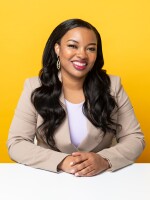AYESHA RASCOE, HOST:
If the world is looking a little more blurry lately, well, sure, it could be because you're getting older. But some scientists say it could also be because you didn't spend enough time outdoors as a kid. Myopia, or nearsightedness, is on the rise around the world today, especially among children. To understand some of the reasons why and how to prevent it, we turn to Dr. David Epley. He's with the American Academy of Ophthalmology and a pediatric ophthalmologist at Children's Eye Care in Kirkland, Wash. Welcome to the show.
DAVID EPLEY: Thank you very much. Nice to be here.
RASCOE: So you're a pediatric ophthalmologist, so let's start there. What are you seeing in terms of kids developing myopia?
EPLEY: Yeah. We're seeing lots more children developing myopia over time compared to previous decades.
RASCOE: But are more adults also presenting and having this issue?
EPLEY: Well, more adults are getting myopic because they develop myopia as a child, which is when we typically develop nearsightedness is - as through our growth process between 6 and 16 years of age. As we grow, our eyes grow too long. That's what nearsightedness is - is the eyes become defocused for far away and better focused for close up.
RASCOE: And so what is happening to our eyes when we're outdoors that would help prevent myopia?
EPLEY: Science isn't perfectly clear on this, but it seems that there are spectrum of lights - the wavelengths of light in outdoor light are different than those wavelengths in indoor light, and then that conveys some sort of a protective effect. But primarily, we think that it's that when you're outside, your face isn't buried in a book or in a phone or a tablet. You're looking at things that are farther away. That relaxes your accommodation or your focus.
The focusing thing up close is about two things. It's about the distance from your face. So holding things too close, less than 12 inches in, can contribute to it. And it's also about the intensity or the length of time you're spending doing that close work. There are a couple of other environmental factors, such as low levels of vitamin D. If you're not outside, your body isn't converting to vitamin D in your system. And then also, your diet can play a bit of a role there, too, in terms of environmental factors.
RASCOE: Can myopia lead to any other serious conditions? Obviously, you may have to wear glasses or get contacts, but can it get more serious than that?
EPLEY: Yeah. And this is the reason that ophthalmologists and pediatric ophthalmologists are concerned about this - is that as you get more and more nearsighted, your eye is larger and bigger and not meant to be that way. And so there are some conditions that can happen decades down the road that can affect your eyesight permanently sometimes. And in particular, we worry about this in people that are what we call highly myopic. So over -6 diopters of myopia, they're at higher risk for certain types of glaucoma, for early cataracts, which is a cloudiness to the lens that drops your vision. They're also at risk, though, for macular degeneration at a much younger age, not just the older age macular degeneration but younger, and for other conditions of the retina, like retinal detachment, that can compromise the vision.
RASCOE: Can you reverse myopia?
EPLEY: We can't really reverse myopia. Once the eye has grown, they're kind of the way it is for your visual system. So it's better to prevent the development of it in the first place. And there are some things we can do to slow that down, such as making sure that your kids get outside for an hour a day. The second thing that parents can do is to follow what we call the 20-20-20 rule, which is for every 20 minutes of near work - reading, phones, tablet, laptop - you take a 20-second break. And during that 20-second break, you stop looking at things up close. You look at something that's 20 feet or more away. So every 20 minutes, 20-second break, looking 20 feet or more away.
If nearsightedness has developed, the ways that we can treat that myopia to slow down progression - and these days we have kind of a variety of things. There's eyedrop medication that helps to prevent the eye from growing as much. There are contact lenses, a couple of different types, something called orthokeratology, which is a hard contact lens you wear at night that reshapes the surface of your eye and also contact lenses, soft lenses you wear during the day. And in the near future, in the U.S. and currently in some other parts of the world, there are glasses, certain types of specialized glasses lenses, that can help slow down that progression, as well.
RASCOE: That's Dr. David Epley. He is a pediatric ophthalmologist at Children's Eye Care in Kirkland, Wash. Thank you so much for joining me.
EPLEY: Thank you for having me. Transcript provided by NPR, Copyright NPR.
NPR transcripts are created on a rush deadline by an NPR contractor. This text may not be in its final form and may be updated or revised in the future. Accuracy and availability may vary. The authoritative record of NPR’s programming is the audio record.



